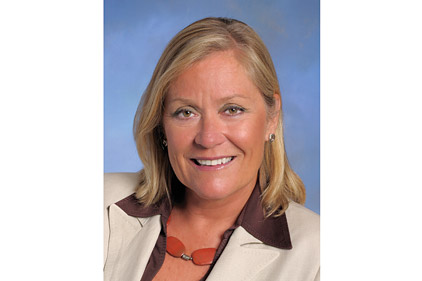
|
| Kateri Callahan |
Boosting building energy efficiency has become a trend that won’t be going away soon — and it is a trend worth embracing by HVAC contractors. Here are several reasons why the focus on energy efficiency is not going to go away:
• As America’s largest consuming sector for energy (at 40 percent), natural gas (just over 50 percent), and electricity (over 70 percent), homes and commercial buildings represent the greatest opportunity for Congress and the administration to deploy energy efficiency as a means of improving the economy, creating jobs, and making our country more secure.
• While the nation’s manufacturing and transportation sectors have made great strides in improving their energy efficiency and fuel economy over the last few decades, building energy consumption has remained flat.
• Experts estimate that the combination of greater mechanical and building energy efficiency can meet future energy needs through 2025. This translates into no need for new power plants, which is a high priority for utilities and state/local governments.
• Home and commercial building owners and occupants are turning to efficiency improvements as a means of generating immediate positive cash flow through utility bill savings.
• Utility bills are typically the highest cost of home ownership outside of the mortgage itself and the second leading cause of foreclosure — increasing the importance of efficiency in stabilizing the housing sector, especially for low-income homeowners.
So it shouldn’t be surprising that HVAC contractors — as well as everyone else involved in the built environment — will attract growing attention from elected officials, government agencies, and utilities, along with the home and building owners and occupants seeking to improve America’s energy efficiency.
Homebuilders have already seen this trend. When the National Association of Homebuilders (NAHB) Research Center asked builders to identify and rank emerging trends for residential construction, they reported that “the trend with the greatest growing relevance to builders was energy efficiency. A distant second and third were low-maintenance homes and design for aging-in-place.” It’s also worth noting that the fourth leading trend was green building, and the fifth was zero-energy houses.
Roles for Contractors
In the HVAC sector, HVAC and water heater manufacturers have already caught the energy efficiency wave. The Air-Conditioning, Heating and Refrigeration Institute (AHRI) sprang into action in late 2009, working out a historic, voluntary agreement with national energy efficiency advocates in support of new federal standards to substantially boost the efficiency of residential central air conditioners, furnaces, and heat pumps.
So how can HVAC contractors embrace these trends, play a greater role in building performance, and help shape tomorrow’s solutions? Here are a few recommendations:
• Continue to promote the credentialing and advanced professionalism efforts of AHRI and organizations like the Air Conditioning Contractors of America (ACCA).
• Ensure that HVAC equipment and materials are designed, installed, and maintained to standards like ACCA Manual J, D, and S, as required by the International Energy Conservation Code (IECC), the International Residential Code (IRC), ASHRAE 90.1, and other code-referenced standards.
• Offer expanded services that include whole-building air-sealing and insulation, which not only expands business opportunities (particularly for residential HVAC contractors), but also lends professional expertise to ensuring that comfort, indoor environmental, and cost-effectiveness levels are met in tandem with greater equipment and whole-building efficiency.
Keep Up to Date
One of the best ways to keep abreast of these trends is to attend the Energy Efficiency Global Forum & Exposition (EE Global), which will be held March 27-29 in Orlando, Fla.
Now in its fifth year, EE Global’s Solutions Showcase trade show offers the newest efficiency technologies and lets you meet the vendors providing state-of-the-art energy efficiency for home and commercial building construction from around the world.
EE Global allows you to engage the policymakers, business executives, and opinion leaders from the United States, China, India, Russia, South Africa, Australia, and dozens of other nations who are involved in policies that affect the HVAC community.
EE Global also lets you meet and form partnerships with the innovators, financiers, and business men and women who will help you succeed.
Executive dialogue sessions of particular interest to HVAC professionals include several focusing on implementation of and innovations in energy-efficient technologies:
• Zeroing in on Homes: The Role of Energy Efficiency in the Residential Sector,
• Leveraging Technology to Increase Energy Efficiency, and
• Dissecting Retrofit Models.
For more information, visit www.eeglobalforum.org.
Publication date: 01/30/2012









